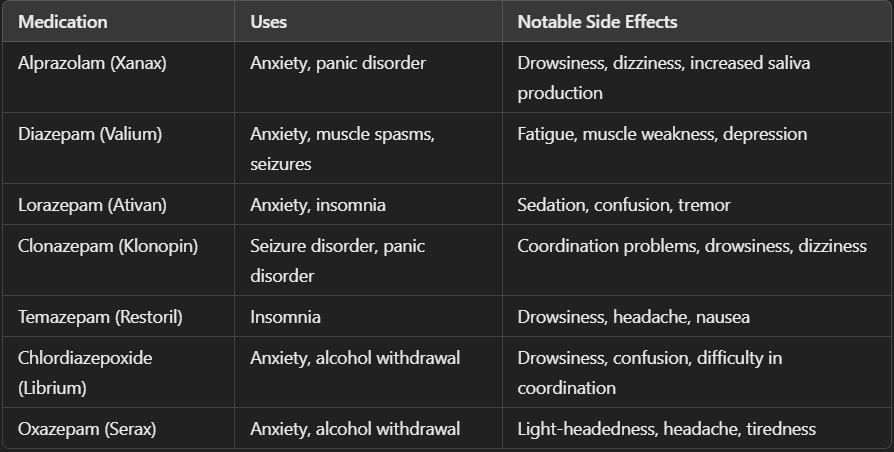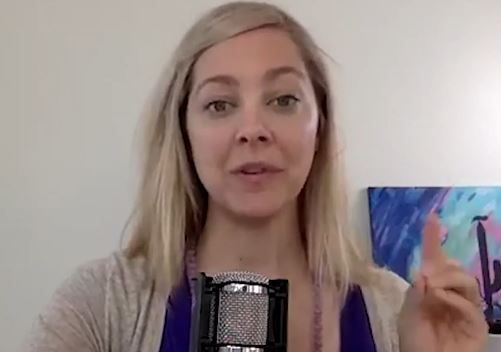Benzodiazepines are a class of medications that affect the central nervous system. Orange County Drug & Alcohol Rehab Center offers one of the best inpatient drug rehab in Orange County, CA. They are commonly prescribed to treat conditions such as anxiety, insomnia, and seizures. These drugs work by enhancing the effect of a neurotransmitter called gamma-aminobutyric acid.
This helps to calm the brain and reduce nervous system activity.

These medications can be effective in the short term, but they also carry risks. Misuse or long-term use can lead to dependence and serious side effects. This include confusion, amnesia, and respiratory depression. Combining benzodiazepines with other sedatives, opiates, or alcohol poses a huge risk. It increases the risk of profound sedation coma, and even death.
Approximately 12.5% of adults in the U.S. use benzodiazepines. Out of these, 2.1% misuse the medication, and around 0.2% develop a benzodiazepine use disorder. Chronic use of benzodiazepines can lead to cognitive impairments. This includies memory issues and worse cognitive decline.

Benzodiazepine has many negative side effects. However, it still serves its purpose. This redditor mentioned how it saved his life of debilitating anxiety. He also mentions that the side effects can be up to them and their doctor.
Knowing how benzodiazepines affect the body can help patients make decisions about their use. It’s crucial to follow medical advice and be aware of potential risks. This ensures that these medications are used safely and effectively.
What are the Types of Benzodiazepines?
Benzodiazepines are divided into different types based on how long their effects last in the body. These include short-acting and long-acting benzodiazepines. Each type has specific uses and characteristics important for treatment.
What are the Short-Acting Benzodiazepines?
Short-acting benzodiazepines typically have effects that last from a few hours to a day. These drugs are often used for medical procedures or treating acute anxiety.
- Alprazolam is commonly known as Xanax, it is used for anxiety disorders and panic attacks. Its effects are felt quickly and last a few hours.
- Midazolam is often administered before surgeries to help with sedation and anxiety, due to its quick onset and short duration.
- Triazolam is known for treating insomnia, it helps people fall asleep quickly but does not aid in staying asleep for long periods.
- Lorazepam - is also known as Ativan, it is used for severe anxiety and for its seizure-stopping properties in emergencies.
What are the Long-Acting Benzodiazepines?
Long-acting benzodiazepines have effects that can last for a day or more. This makes them suitable for ongoing treatment of conditions like anxiety and seizures.
- Diazepam: Known as Valium, it is used for anxiety, muscle spasms, and seizures. Due to its long action, it remains effective throughout the day.
- Clonazepam: Sold under the brand name Klonopin. It is prescribed for panic disorders and preventing certain types of seizures.
- Temazepam: Often used for treating severe insomnia. It provides relief throughout the night due to its longer-lasting effects.
List of Common Benzodiazepines

What are the Uses of Benzodiazepines?
Anxiety Disorders
Benzodiazepines are often prescribed for anxiety disorders. They help reduce symptoms by making the central nervous system less active. This can be particularly helpful for people with generalized anxiety disorder (GAD) or panic disorder. Common medications in this category include diazepam and lorazepam. These medications work quickly, which can provide immediate relief for acute anxiety episodes.
Insomnia
For those struggling with insomnia, benzodiazepines can be an effective solution. These drugs shorten the time it takes to fall asleep and help in maintaining sleep throughout the night. Temazepam and triazolam are examples of benzodiazepines used for sleep disorders. They not only help with falling asleep but also improve the overall quality of sleep. This makes them a valuable tool for those with chronic sleep issues.
Seizure Management
Benzodiazepines also play a critical role in managing seizures. They are effective as anticonvulsants, helping to prevent and control seizure activities. Clonazepam and diazepam are frequently used for this purpose. These drugs can be life-saving during acute seizure episodes. They are also often included in emergency medication kits for people with severe epilepsy.
Alcohol Withdrawal
Benzodiazepines can help ease the symptoms and lower the risk of severe complications. such as seizures and delirium tremens.
Chlordiazepoxide and
diazepam are commonly used in this context. These provide sedation, reduce anxiety, and help manage the physical symptoms of withdrawal. It makes the detoxification process safer and more comfortable.
What are the Side Effects of Benzodiazepines?
Benzodiazepines can cause drowsiness, confusion, and various physical and mental health issues.
Benzodiazepines’ Common Side Effects
Drowsiness is one of the most frequent effects, making daily activities difficult. Users may experience confusion, which can hamper decision-making and attention.
Nausea and vomiting often occur, impacting overall comfort. Amnesia, or forgetfulness, can affect short-term memory. Dizziness and unsteadiness can lead to risky falls, especially in older adults.
The risk of addiction and dependence is high. This leads to withdrawal symptoms like tremors, hallucinations, and severe anxiety. Long-term use may also cause tolerance, requiring higher doses for the same effect.
Serious outcomes like overdose, respiratory depression, coma, and even death can happen. This is especially when benzodiazepines are mixed with alcohol or other sedatives. Misuse and abuse also pose significant risks.
Dr. Nicole Cain’s Experience Tapering Benzodiazepine

Dr. Nicole Kane shares her experience with benzodiazepine tapering as part of her anxiety treatment journey. She explains that the severe anxiety and panic attacks she suffered required medication to manage. Benzodiazepines played a crucial role in helping her through one of the worst times of her life. However, she decided to taper off these medications using natural holistic remedies.
How She Achieved Tapering Off Benzodiazepines
Dr. Kane emphasizes that tapering off benzodiazepines is a highly individualized process. With "slow and steady" being the key approach. Factors influencing the tapering process include several things. These include the dosage taken, the duration of use, and the presence of underlying conditions. She shares several strategies that helped her successfully taper off:
- Anti-inflammatory Diet: Benzodiazepines reduce brain inflammation. So tapering off can lead to rebound inflammation. Dr. Kane managed this by consuming an anti-inflammatory diet rich in omega-3 fatty acids. She also consumed brightly colored fruits and vegetables, and supplements like turmeric.
- GABA Support: Benzodiazepines increase GABA levels in the brain. So tapering off can cause GABA withdrawal symptoms. To address this, she created a "GABA bridge". She used a product called "Happy Sleepy Powder". This contains ingredients to support GABA production naturally.
- Lifestyle and Counseling: Dr. Kane also focused on lifestyle changes and counseling to address the root causes of her anxiety. This comprehensive approach was essential in her successful tapering process.
Dr. Kane started with a high dose of 10 milligrams of diazepam and managed to taper off completely over the course of a year. She stresses the importance of patience, proper diet, and lifestyle adjustments. She also mentioned taking supplements and seeking professional guidance throughout the process.
How Dr. Nicole Kane is Doing Today
Today, Dr. Nicole Kane is benzodiazepine-free. She continues to support others in their tapering journeys through education and resources. She offers guidance on her website, sharing detailed information about her holistic approach. She remains committed to helping others find hope and successfully taper off benzodiazepines. She encourages anyone interested in tapering to be patient and utilize the available tools and resources.
What is the Phase Four of the Intensive Outpatient Counseling Program at Orange County Drug & Alcohol Rehab Center?
Phase Four of our drug treatment program entails an intensive outpatient counseling program. As you begin to feel more like yourself again without substances, you’ll need to go through an outpatient program. Especially one that will help you get to the root of your addiction.
To learn more about our outpatient counseling program and how you or a loved one can become admitted into our drug treatment program, reach out to us.
What To Expect With Phase Four Of Our Drug Treatment Program
In Phase Four, you will begin to learn how you can live a life without drugs and alcohol. While the previous phases detailed detoxing your body and your mind from substances, in Phase Four, we’ll help you with those mental hurdles. Add those unresolved emotions that you might be struggling to overcome.
We’ll help you break free of those constraints as well as help you achieve a better awareness of your own happiness with your life. When you enter Phase Four, you’ll work with a chemical dependency counselor who can help you learn how to live in the present.
How Does Phase Four Work?
Phase Four is the final step of our drug treatment program. As we enter Phase Four, you’ll start a unique form of therapy. One that will help you handle any type of mental state you might find yourself in whether it’s an easy or a hard day.
Our philosophy at Orange County Drug & Alcohol Rehab Center is based on drug and alcohol counseling needs to dive into an individual’s past. This is to fully understand what has drawn them to drugs in the first place. The negative emotions that someone might exhibit is what drives a person to want to become happier with substances. We’ll help you look toward a future that is healthier and happy with the help of a trained professional.
Why You Should Select Orange County Drug & Alcohol Rehab Center
Located in California, Orange County Drug & Alcohol Rehab Center is a premier facility dedicated to guiding you towards long-term recovery. As a family-owned center, we pride ourselves on offering a unique rehabilitation experience. We address both physical and mental addiction. Our four-phase drug treatment program is designed to help you achieve a healthier and happier life free from substances.
Why Choose Us:
- Family Owned - We offer a personal touch and a compassionate approach to your recovery journey.
- PhD Level Clinical Director - Our program is overseen by an expert with a doctoral level of expertise.
- Masters Level Therapists Specialized in PTSD and Trauma - Our therapists are specialized in treating PTSD and trauma. This ensures comprehensive care.
- State Licensed and Joint Commission Accredited - We meet the highest standards of care and safety, giving you peace of mind.
- Legitscript Certified - Our certification assures that our practices meet the rigorous standards. Both legitimacy and quality in addiction treatment.
Choose Orange County Drug & Alcohol Rehab Center for a supportive, professional, and accredited path to a substance-free life.
Any questions? Contact us anytime
Contact Us
We will get back to you as soon as possible
Please try again later
MEDICATION ASSISTED TREATMENT
We offer MAT Medication Assistant Treatment, both Maintenance and Anti Craving. Our Technological, Medical and Clinical treatment approach mitigates and heals alcoholism, opiate dependency, benzodiazepine dependency and the underlying causes and conditions.
ABOUT OC REHAB CENTER
Orange County Drug and Alcohol Rehab Center is located at Irvine Blvd Tustin, CA. We have a facility that you will go through when you become admitted to our drug treatment facility. In this part of the country, the weather is beautiful; most of the year it is sunny, and it creates the perfect atmosphere to recover from your alcohol or drug addiction. If you or a loved one are suffering from substance abuse, then learn more about our drug treatment facility to see if we’re the right program for your recovery.
